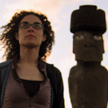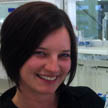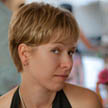I’m a Scientist is like school science lessons meet the X Factor! School students choose which scientist gets a prize of $1000 to communicate their work.
Scientists and students talk on this website. They both break down barriers, have fun and learn. But only the students get to vote.
This zone is the Organs Zone. It has scientists studying health and disease in various parts of our bodies. Who gets the prize? YOU decide!









Hmmm….Good question. Hard to answer though! The first discovery that cells existed was by Robert Hooke in 1665 or so. But he was looking at cork (the bark of a tree…it happens to have really big cells!). Lots of other scientists started finding cells in other places, including the slime from eels! In 1759, Caspar Wolfe suggested that all animals are made up of globules that can be seen under the microscope. But it wasn’t until 1839 that Schwan decided that all animal tissues are made of cells! Since then, scientists have looked at cells from all sorts of places, including dead bodies. The problem with using dead bodies though is that the cells are dead when you look at them. And removing live cells from people isn’t always pleasant (though doctors and scientists do it for things like biopsies). So scientists often grow live cells in the lab in a special fluid. That means that we can do experiments on live human cells….without having a human being attached to them and complaining!
People will often say that the largest cell in the world is the ostrich egg…which isn’t quite true. The ostrich egg may indeed be the heaviest cell in the work, but nerve cells in the blue whale and colossal squid can be 12 metres long! Even the human body has nerve cells which can be 1.5 metres long!
0
Nice answer, Carina!
Did you know that there’s not just human cells in the human body, but trillions of bacteria?
It is estimated that 500 to 1000 species of bacteria live in the human gut and a roughly similar number on the skin! And these aren’t the ones that make us sick. They are the good ones! That’s A LOT of bugs!!
In fact, don’t be too scared by this, but research suggests that there are 10 times as many bacteria in your body as there are human cells! Now that’s crazy!!
1
Great question! Carina’s answer is a good one. Not going to think about Hannah’s answer; as long as the bacteria do what they’re meant to do, then I’m happy! 😉
Ultimately, yes. Doctors/ scientists/ anatomists looked at cadavers (bodies of those who had passed away) many many many years ago to look at where things were, and to try and find out what they did, using early light microscopes to look at cells.
Today, we don’t need to do this. We do however need to be able to tell cells apart. This can be done by how they look, or what they do. Since single cells can be studied when grown in a dish, you can look at ways of telling them apart from other cells. Since we’re all very visual beings, we like to somehow specifically stain them so we can see where they are, how many of them there are and what they do in the body.
Today’s technology allows us to look at internal structures with little difficulty (x-ray, MRI etc).
In fact there are microscopes today that can look at individual cells deep into an animal brain. It’s very specific and can only look in a few millimeters (hence why you’d have to use an animal model), but this allows us to look at how cells move/respond/act naturally without having to disturb the animal or it’s cells. It’s pretty cool when you think of it. So much detail, so little harm/effort.
Hope that helps 😀
0
Well answered by the other fantastic scientists!
Early anatomists did most of their work of studying the human body using corpses (they use to be known as grave diggers!). This would be considered grossly unethical today!
And as Yashar and Carina explain- we have sophisticated technology that allows us to study cells by looking through the body, or even be growing them outside the body!
Also – heads up on the cool fact by Hannah – yay for the gut microbiome!
0
Scientists still look at cells from dead bodies today. The composition of cells in brain tissue or in tumours can tell them about the patients illness and maybe give them some clues on how to treat people with the same illness in the future. Before a person dies they have to give permission for their body to be used for this purpose.
To allow scientists enough time to look at the cells, the decay process must be stopped in the dead body (cadaver). There’s no point in looking at cells that are decomposing. In order to do this the body is washed in a chemical called formaldehyde. This chemical fixes the cells in the same place as when the person was alive — its a little like freezing a person but without a freezer and it can never be undone.
0